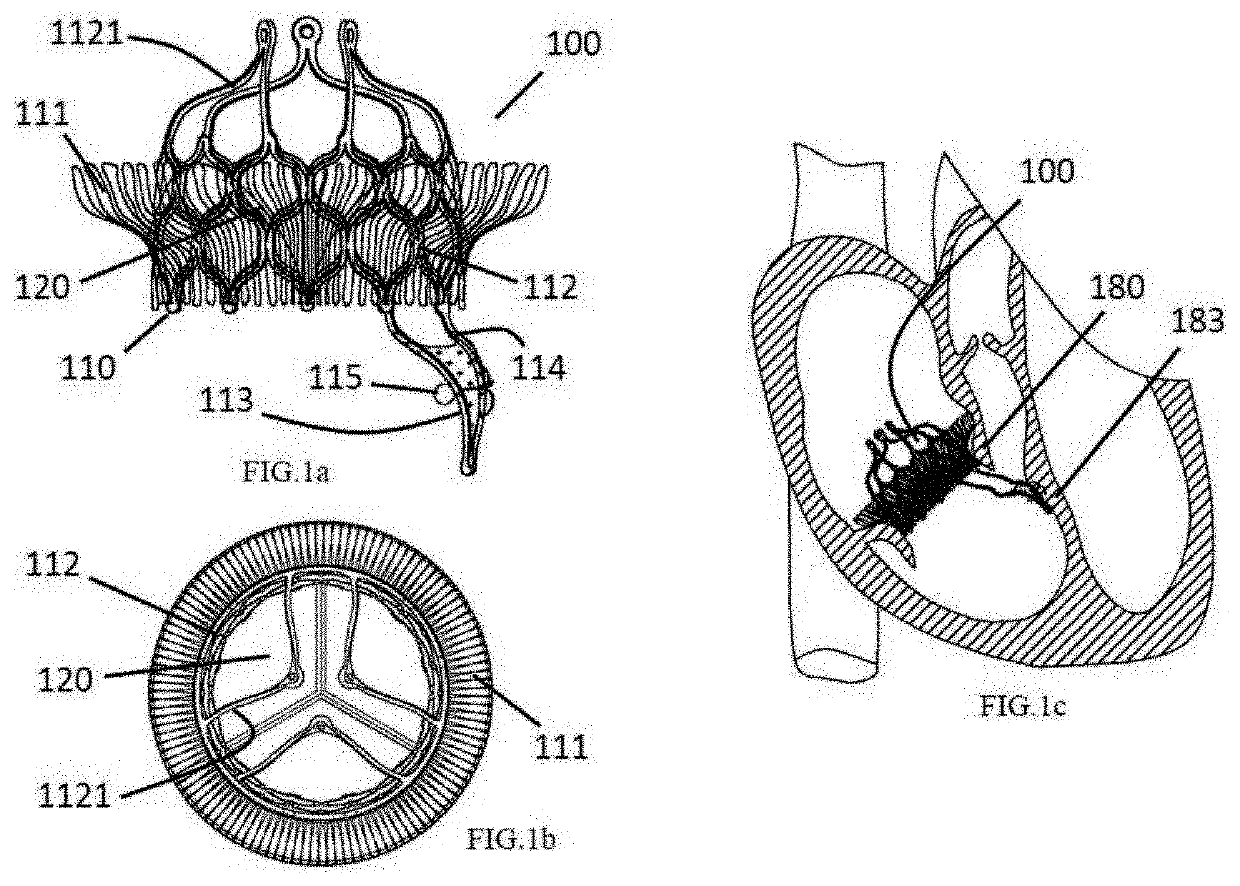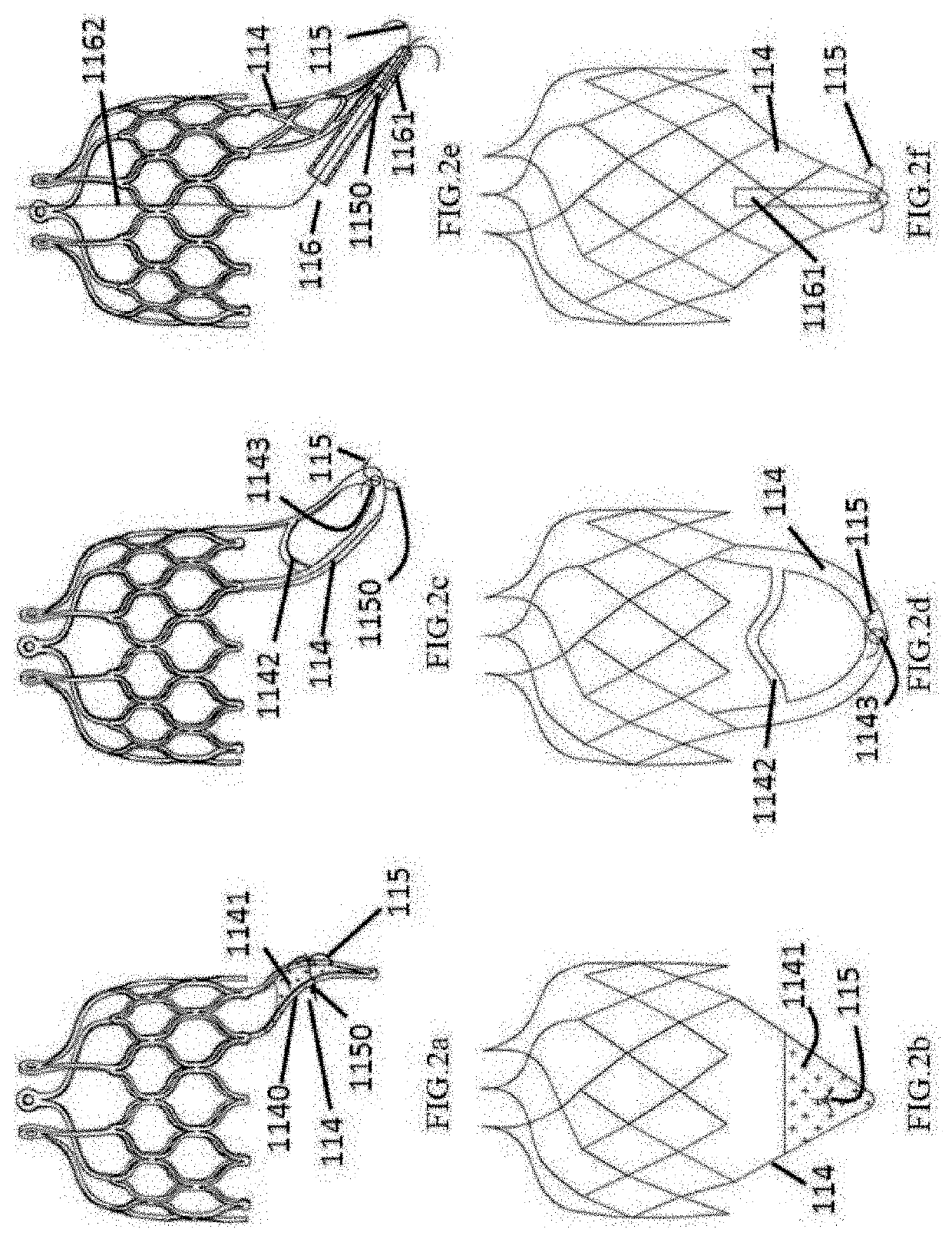Heart valve prosthesis anchored to interventricular septum and conveying and releasing method thereof
a technology of heart valve and interventricular septum, which is applied in the field of medical equipment, to achieve the effect of avoiding the traction of the valve annulus and reducing the influence of the outflow tra
- Summary
- Abstract
- Description
- Claims
- Application Information
AI Technical Summary
Benefits of technology
Problems solved by technology
Method used
Image
Examples
embodiment 1
[0093]For a long time, large valve manufacturers, whether Edwards corporation or Medtronic corporation, all achieve a sufficient anchoring force of the supporting frame by increasing the radial expansion ratio of the supporting frame to the valve annulus, which has already been widely applied and become a common view in the field of aortic valve intervention and replacement, and in the field of pulmonary valve intervention and replacement (generally, 10% -15% is the ideal perimeter expansion ratio). Moreover, subsequently, both Jenavalve corporation and Symetic corporation applied the valve leaflet clamping mechanism to the products, which still has a certain expansion ratio for the valve of the patient. However, because the physiological structure and the pathological mechanism of the atrioventricular valve (including the mitral valve and the tricuspid valve) are complicated, it is quite difficult to accurately position and fix the products. Currently, for the technique of atrioven...
embodiment 2
[0100]In an embodiment, as shown in FIGS. 3a and 3b, a heart valve prosthesis 200 anchored to an interventricular septum is provided for mitral valve intervention and replacement treatment. The heart valve prosthesis comprises a valve supporting frame 210 and a fixing device 213; the valve supporting frame 210 comprises a valve stitching section 212 and an artificial valve (not shown); the artificial valve is fixedly connected to the valve stitching section 212; the fixing device 213 comprises a fixing and supporting section 214 and a fixing member 215; one end of the fixing and supporting section 214 is connected to a proximal portion of the valve stitching section 212, and the other end of the fixing and supporting section 214 is connected to the interventricular septum of the patient by the fixing member 215, to support the heart valve prosthesis 200 and limit the axial movement of the heart valve prosthesis 200. The heart valve prosthesis 200 further comprises a positioning ring...
embodiment 3
[0105]In an embodiment, as shown in FIGS. 5a-5c, a heart valve prosthesis 300 anchored to an interventricular septum is provided for tricuspid valve intervention and replacement treatment, wherein the heart valve prosthesis comprises a valve supporting frame 310 and a fixing device 313; the valve supporting frame 310 comprises a valve stitching section 312 and an artificial valve (not shown); the artificial valve is fixedly connected to the valve stitching section 312; the valve stitching section 312 is a tube-like wave-shaped structure; the fixing device 313 comprises a fixing and supporting section 314 and a fixing member 315; the fixing and supporting section 314 is an inverted cone-shaped structure; the fixing and supporting section 314 includes a plurality of rods or wires; one end of the fixing and supporting section 314, which has a larger diameter, is connected to the proximal end of the valve stitching section 312 through well-known techniques such as stitching, clipping or...
PUM
 Login to View More
Login to View More Abstract
Description
Claims
Application Information
 Login to View More
Login to View More - R&D
- Intellectual Property
- Life Sciences
- Materials
- Tech Scout
- Unparalleled Data Quality
- Higher Quality Content
- 60% Fewer Hallucinations
Browse by: Latest US Patents, China's latest patents, Technical Efficacy Thesaurus, Application Domain, Technology Topic, Popular Technical Reports.
© 2025 PatSnap. All rights reserved.Legal|Privacy policy|Modern Slavery Act Transparency Statement|Sitemap|About US| Contact US: help@patsnap.com



